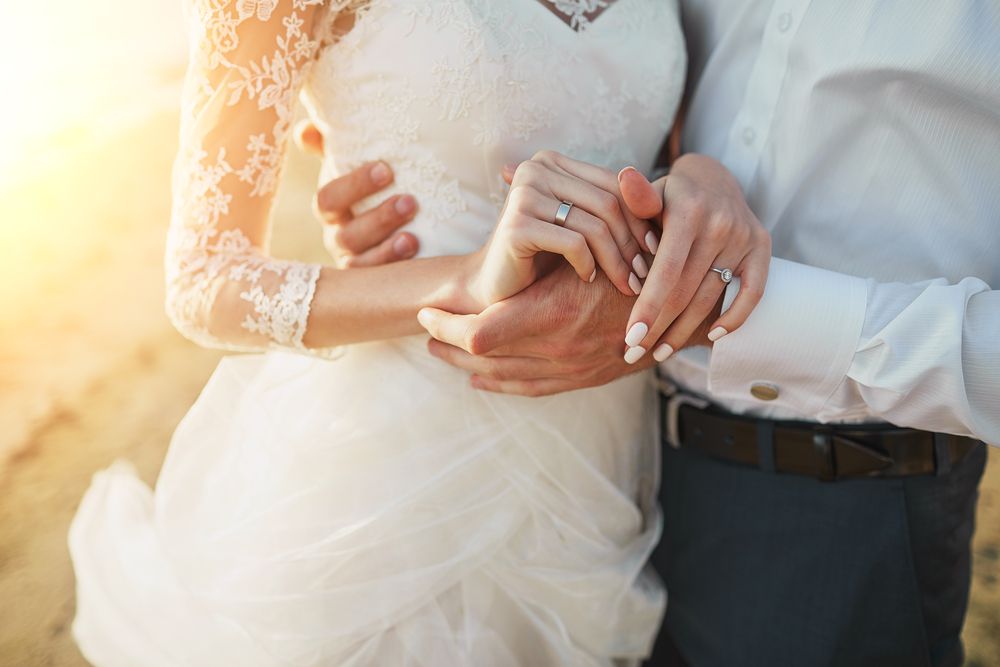If you’re married or in a civil partnership, you may be able to claim a rebate of up to £1,188 from the government thanks to the marriage tax allowance. It’s estimated that 2.4 million married couples in the UK could benefit from the tax break, it’s just that many of us still haven’t applied.
Get free adviceWhat is the marriage tax allowance?
Introduced on 6 April 2015, the marriage tax allowance is a government benefit that entitles those in a married couple or registered civil partnership to a tax break. It’s an elective benefit, which means you have to apply for it first in order to receive it.
And if you’ve missed out in the past, it could be time to claim some money back. Claims can be backdated by up to four years, to April 2016, meaning a valid claim could be worth up to £1,188.
How does it work?
If you earn less than £12,500 per year, you can transfer 10%, or £1,250, of your personal tax allowance to your spouse or civil partner in order to lower the amount of tax that they pay.
This could result in a saving of up to £250 for them in the tax year.
In order to benefit from the allowance, you’ll need to have an income of less than £12,500 and your partner’s income must be between £12,501 and £50,000. If you live in Scotland, it’s slightly different; your partner’s income must fall between £12,501 and £43,430.
Who is eligible for the benefit?
To make a claim for the marriage tax allowance, there are a few important conditions:
- You need to be married or in a civil partnership.
- You and your partner must have been born after 5 April 1935. (If one or both of you were born before this date, you may be entitled to Married Couple’s Allowance, instead.)
- One partner’s salary must fall below the personal allowance threshold (this is currently £12,500).
- The other partner must earn more than the personal allowance and be paying the basic tax rate (20% of their income).
- Higher rate taxpayers are not currently eligible for the benefit.
It’s also important to remember that if you plan to apply for backdated marriage allowance, both you and your partner must have met all of the above criteria, during every year you’re applying for in order to be successful.
Get free adviceHow do I apply?
You can apply for marriage tax allowance online, at the HMRC website. Bear in mind that it is the partner who wishes to transfer the 10% of their personal allowance over who must apply.
You’ll need both you and your partner’s National Insurance numbers to complete an application, as well as a form of identification, for example, your passport number.
You can also notify HMRC you wish to transfer marriage allowance via your self-assessment if you fill in a tax return.
If you can’t apply online for any reason, you can contact HMRC directly on 0300 200 3300 to apply over the phone.
Once the allowance has been applied, you may see a change to your tax code on your payslip.
- If you are the recipient of the allowance, this will be denoted by the letter ‘M’.
- If you’re transferring your allowance, this will be denoted by the letter ‘N’.
This new tax code will adjust the amount the tax-paying partner earns, but may not be reflected in their pay immediately – it can take up to two months to show.
If you’ve already completed the application once, as long as your circumstances haven’t changed, you won’t have to reapply every subsequent tax year. The allowance will automatically be reflected in your tax payments.
What if my circumstances change?
Your marriage allowance will continue until you either cancel your allowance or you are no longer classed as married – for example if you get divorced or have your civil partnership dissolved. If anything changes, it’s up to you to cancel. You can do this online via the government website.
You may also find your income dropping to below £12,500 if you’re off on maternity leave, in which case, you can transfer the 10% allowance to your higher earning partner.
My income has changed. Do I need to tell HMRC?
If the amount you earn has changed and you’re not sure whether you should cancel your marriage allowance or not, you can always get in touch with HMRC to confirm whether you’re still entitled to the tax break.




